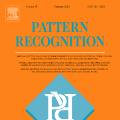This paper presents a new convolutional neural network architecture for audio pattern recognition tasks. We introduce a new hyper-parameter for reducing the computational complexity of models. Using optimal values of this parameter, we also can save or even increase the performance of models. This observation can be confirmed by experiments on three datasets: the AudioSet dataset, the ESC-50 dataset, and RAVDESS. Our best model achieves an mAP of~0.450 on the AudioSet dataset, which is less than the performance of the state-of-the-art model, but our model is 7.1x faster and 9.7x smaller in parameter size. On the ESC-50 dataset and RAVDESS, we obtain state-of-the-art results with accuracies of~0.961 and 0.748, respectively. Our best model for the ESC-50 dataset is 1.7x faster and 2.3x smaller than the previous best model. For RAVDESS, our best model is 3.3x smaller than the state-of-the-art model. We call our models "ERANNs" (Efficient Residual Audio Neural Networks).
翻译:本文展示了用于音频模式识别任务的新的进化神经网络结构。 我们为降低模型的计算复杂性引入了新的超参数。 使用该参数的最佳值, 我们还可以保存甚至提高模型的性能。 有关此观测可以通过三个数据集的实验来证实: 音频Set数据集、 ESC- 50 数据集和 REVDESS。 我们的最佳模型在音频Set 数据集上实现了~ 450 的 mAP, 低于最新模型的性能, 但是我们的模型在参数大小方面比7.1x更快, 9.7x要小。 在 ESC- 50 数据集和 RAVDESS 上, 我们分别获得了 ~ 961 和 0. 748 的精确度结果。 我们的ESC- 50 数据集的最佳模型比以往的最佳模型快1.7x 更快, 2.3x 更小。 在RAVDESS 中, 我们的最佳模型比最新模型小3.3x 比最新模型小。 我们称我们的模型“ ERANUS” (Effal Solial AL Networks) 内, 我们称我们的模型为“ERADal- Neal



